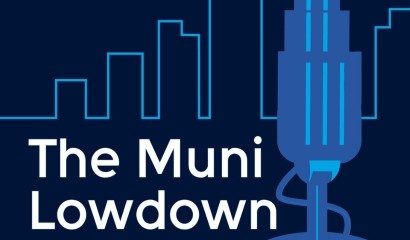Kloeckner Pentaplast potential Chapter 11 could unpack tensions, opportunities for lenders looking to take control – Legal Analysis
Kloeckner Pentaplast (KP), a distressed global sustainable packaging firm, has reportedly been working with a group of its first lien lenders to prepare for a pre-arranged Chapter 11 filing. After reportedly walking away from an out-of-court amend and extend (A&E) transaction earlier this year, KP’s sponsor and a holder of approximately EUR 100m (i.e., one-third) of the company’s EUR 300m second lien notes, Strategic Value Partners (SVP), could be motivated to protect its investment in the company in any such restructuring. In this article, the Debtwire legal analyst team discusses tensions that could arise between the first lien lenders, SVP, and other creditor groups that could be out of the money in a Chapter 11 case and how they could be addressed.
Mounting debt, looming maturities, and an 11th-hour case of cold feet
KP was founded in Montabaur, Germany, in 1965 and according to its website, operates 30 plants in 18 countries and employs over 5,600 people. KP’s last reported financials were for the quarter ended September 2024, showing a EUR 1.6bn secured funded debt burden – a significant chunk of which matures in 2026. The following table summarizes the debt as disclosed at that time.
However, KP’s capital structure has changed in at least two significant ways. For one, in April 2025, KP obtained an extension of the maturity date on its EUR 300m 6.5% SUNs (referenced in the table above) to 2029 from 2026 and exchanged them into second-lien notes. As noted above, SVP – which reportedly made a EUR 150m equity injection in May 2023 – holds approximately one-third of these notes. It has been reported that Castle Knight also holds approximately one-third of the 2L notes.
In July 2025, after the SUNs were exchanged for 2L notes, the company was set to enter into the A&E transaction whereby SVP would have injected EUR 75m in fresh equity and EUR 200m of last-out first-lien debt in exchange for first lien lenders agreeing to extend their first-lien maturities to 2029. As Debtwire reported at the time, EUR 125m of the funds to be provided by SVP were earmarked to make a pro-rata paydown of the first lien loans and senior secured notes. However, SVP reportedly walked away from the deal at the 11th hour.
The second significant change to KP’s capital structure occurred at the end of August 2025, when KP incurred a USD 112m bridge loan that has a two-month maturity – i.e., it is set to expire toward the end of October. A group of the company’s first lien lenders who signed on to a cooperation agreement, including Alcentra, Nuveen, Neuberger Berman and Redwood, backstopped the bridge loan. According to Debtwire’s earlier report, the loan was intended to serve as a bridge to a change of control transaction whereby existing creditors – presumably the first lien lenders backstopping the bridge loan – would take over the business. Holders of approximately 85% of the first lien debt have now signed on to the cooperation agreement. Also in the mix is an unsecured bondholder group advised by Akin.
Sustainably packaging the sustainable packager
KP has been experiencing financial headwinds attributable, at least in part, to a (i) large working capital outflow due to changing payment terms and suppliers demanding more upfront payments, and (ii) rising energy and raw material costs. To address its upcoming debt maturities and improve its balance sheet, KP has retained a number of restructuring advisors (listed in the table above), and is reportedly gearing up for a Chapter 11 case that will implement the terms of a restructuring support agreement (RSA) that KP is negotiating with the first lien lender group.
Debtwire has reported that the company plans to fund its Chapter 11 case with a DIP loan backstopped by the first lien lender group – i.e., the bridge loan lenders – that is expected to exceed EUR 300m and possibly include a roll-up of all (or a portion) of the bridge loan.[1] This could place an additional EUR 300m of debt above SVP’s 2L debt. DIP loans are most often afforded among the highest repayment priority in Chapter 11 cases, making it nearly impossible to emerge as a reorganized entity without paying the DIP loan in full, absent reaching a deal with the DIP lenders.
The additional debt sitting on top of SVP’s 2L debt arguably would make it more difficult for SVP to protect its equity investment in the company (by getting equity in the reorganized KP as a distribution for its 2L debt) in the event that KP commences a Chapter 11 case. In other words, more often than not, shareholders sit at the bottom of the waterfall priority in Chapter 11 and, consequently, typically see their interests cancelled with no distribution in exchange. As such, it would not be unlikely for SVP’s existing equity to get wiped out under the terms of the contemplated RSA, leaving SVP’s 2L debt as its sole source of recovery in a Chapter 11 case. A distribution on that 2L claim could, as further discussed below, include equity in the reorganized KP, which effectively would ensure that SVP continues to hold an equity position in the reorganized company.
Although the RSA terms are not yet known, and indeed an RSA may not have been finalized, a deal may involve first lien lenders taking control of the reorganized company (as was contemplated at the time of the provision of the bridge loan, as discussed above) pursuant to a debt-for-equity swap plan or an asset sale. Through its Chapter 11 case, KP could also conduct an equity rights offering, permitting certain creditors to purchase equity in the reorganized entity at a discount to its estimated value. It is likely that first lien lenders would backstop such an offering, allowing them to purchase a larger share of the equity at a discount. We would expect that whichever path the company and its “consenting creditors” choose to be set forth in the RSA that KP enters bankruptcy with. The real question is who will be among the “consenting creditors” and whether SVP, Castle Knight and/or the unsecured bondholders will be part of this group.
By way of background, companies commencing Chapter 11 cases often work to enter bankruptcy with a restructuring or plan support agreement with a significant group of lenders holding prepetition funded debt that lays out the terms of an agreed-upon Chapter 11 plan. This can ensure a smooth and less expensive and time-consuming trip through Chapter 11. For Debtwire’s tracking purposes, a company enters Chapter 11 with a pre-arranged case if it has an agreement with one or more creditor groups as to the terms of a Chapter 11 plan. A case is pre-packaged, on the other hand, when a company enters Chapter 11 with (i) an agreement on the terms of a plan with the requisite number of creditors whose votes will be needed to confirm a plan, (ii) a proposed Chapter 11 plan, and (iii) the requisite creditors already having voted to accept the plan before the case is commenced. This is in comparison to a free-fall, where no deal with creditors is in place before a Chapter 11 filing, leading to a more costly and, potentially, contentious case.
According to Debtwire’s Restructuring Database, which, subject to certain exceptions tracks cases with at least USD 10m in funded debt, 20 of the 117 Chapter 11 cases commenced in 2025, as of 1 October, were either pre-arranged or pre-packaged. The following table lists these pre-arranged and pre-packaged cases.
As reflected in the table above, most pre-arranged and pre-packaged cases commenced so far this year involve a plan that provides certain secured lenders with either equity in the reorganized entity or a mix of equity and new debt. We also note that, with the exception of the Ligado case and the WeightWatchers case (where shareholders would have been entitled to retain de minimis shares if certain conditions were met), shareholders were wiped out in each of these cases.
Controlling the reorganized company through an asset sale or new equity, and related pressure points
To better understand what type of deal KP could cut with its creditors in advance of a bankruptcy filing, it is worth noting that there are several ways creditors, and, in particular, first lien lenders, can effectively take control of a reorganized Chapter 11 debtor. One way is to credit bid their debt in a section 363 bankruptcy sale. A section 363 sale is subject to bankruptcy court approval and is particularly beneficial to the purchaser (here, possibly the first lien lenders) because it generally results in an order from the bankruptcy court finding that the sale was conducted at arm’s length, in good faith and for value, thereby preventing any such challenges down the road.[2] Moreover, a debtor may sell its property free and clear of any interest in such property (i.e., liens) of an entity other than the debtor, only if (i) applicable non-bankruptcy law permits the sale of such property free and clear of such interest, (ii) the entity holding the interest consents to the sale, (iii) such interest is a lien and the price at which such property is to be sold is greater than the aggregate value of all liens on such property, (iv) such interest is in bona fide dispute, or (v) such entity could be compelled, in a legal or equitable proceeding, to accept a money satisfaction of such interest.[3] Typically, when a debtor sells assets “free and clear” that are encumbered by a lien, the debtor will agree that the lien will attach to the sale proceeds.[4]
The Code permits a secured creditor like the first lien lender group to bid for its collateral using the allowed amount of its secured debt to offset the purchase price. However a bankruptcy court can deny credit bidding if it finds cause. For example, courts have limited a secured creditor’s right to credit bid when the validity of the lien is disputed.[5]
As such, KP could enter Chapter 11 with a deal with its 1L lender group/DIP lenders, pursuant to which the lender group acts as a stalking horse bidder for the company’s assets, with the bid including a credit bid of the lenders’1L debt and the DIP loan. Such bid would be subject to higher and better offers, and other parties could submit competing bids through the auction process, which is designed to ensure that debtors receive the highest value for their assets under section 363 sales. Stalking horse bidders in Chapter 11 cases are often given certain benefits for submitting stalking horse bids, including break-up fees and expense reimbursements to compensate the stalking horse bidder if outbid. Other benefits may include minimum overbids or bid premiums, which require subsequent bids to meaningfully exceed the prior offer, helping maximize value for the estate.
Courts typically defer to a debtor’s reasonable business judgement in selecting the winning bidder, but if a dispute ensues, the court will hear evidence on any issues that may arise.
If SVP were to seek to undercut the 1L lender group’s ability to credit bid its 1L debt, it could argue that the value of the 1L lenders’ collateral is less than their claim amounts. As further discussed below, unsecured creditors may make similar arguments to leverage for a higher recovery. Under the Bankruptcy Code, a claim is an allowed secured claim only up to the value of the collateral securing the claim. To the extent a secured claim is under-secured (i.e., the claim amount exceeds the value of the collateral), the claim is bifurcated into a secured claim and a deficiency unsecured claim. For example, a USD 100m claim that is secured by collateral worth USD 70m, would be an allowed USD 70m secured claim and an allowed USD 30m unsecured claim.
By arguing that the first lien lenders’ 1L prepetition debt is under-secured, SVP could attempt to reduce the amount of secured debt that these lenders could credit bid. Aside from this fight for the sake of reducing credit bidding power, such a valuation fight likely would involve testimony of expert witnesses, discovery, and other costly, time consuming fights and delays that counter the intent of a pre-arranged or pre-packaged case. Given the two-month maturity on the bridge loan, the bridge loan lenders appear to value an expeditious restructuring of KP’s debt. As such, SVP could, to the extent such an argument over the value of the collateral exists, use this as leverage in negotiating with the first lien lender group for an increased recovery, including a percentage of interest in a reorganized KP.
As an alternative to, but with a similar result as an asset sale, KP could issue to its secured lenders on account of their secured claims, new equity in the reorganized entity pursuant to a Chapter 11 plan. As noted in the table above, Chapter 11 debtors commonly implement plans that swap creditors’ debt for equity in the reorganized entity. A debt-for-equity swap could also include a scenario where lenders, such as the first lien lenders and/or the DIP lenders, would receive a combination of take-back debt and reorganized equity.
As noted above, KP’s Chapter 11 plan could also provide for an equity rights offering whereby, as distributions on account of their claims, creditors could be given the right to purchase equity in the reorganized debtor at a discounted value. This option would require participating creditors to invest new money in the company to purchase the equity, albeit at a discount. To the extent that SVP is interested in equity in the reorganized KP, this likely would be an option worth exploring. We note, however, that the plan would need to give the option to participate in a rights offering to all qualified investors in the same class. In other words, if the plan were to provide SVP with participation rights in an equity rights offering on account of its 2L notes, Castle Knight and other qualified holders of 2L notes must be given the same rights.
Under either scenario, distributions and strategy will largely be driven by a valuation of the company in some regard. As discussed above, the company’s assets would need to be valued in connection with any potential asset sale. Also, to the extent that equity in a reorganized KP is distributed to creditors under a plan, KP would need to provide an estimated equity value of the reorganized entity.
Unsecured concerns
While much of the focus herein has been on SVP’s ability to protect its equity investment and how it potentially could leverage certain arguments if the facts are supportive, the terms of any RSA must also be crafted with the rights of unsecured creditors in mind. As noted, a group of unsecured bondholders has already organized and retained Akin as counsel, and a committee of unsecured creditors (UCC) likely would be appointed in KP’s Chapter 11 case.[6] Also, depending on the value of the company, it may be the case that holders of 2L debt, and perhaps even holders of prepetition 1L debt, are under-secured, leaving each group of creditors with unsecured deficiency claims.
In Chapter 11 cases, particularly those where there is very little, if any, value left for distributions to general unsecured creditors, UCCs investigate liens held by secured lenders and any causes of action that the company may have that could increase the pool of assets available for distribution to unsecured creditors. Unsecured bondholders likely would have the same motivations. As such, unsecured creditors – even those who are seemingly out of the money – can also have leverage in Chapter 11 cases. Here, the UCC and potentially the unsecured bondholders likely would investigate whether all liens asserted by the first lien lenders were properly recorded and, with respect to the bridge loan and the exchange of the SUNs for the 2L notes, could investigate whether there are any grounds for challenging such transactions, including as fraudulent transfers.
Final thoughts
The question as to whether KP’s trip through Chapter 11 will be a smooth one may depend on whether it can get the relevant creditor groups to sign onto the RSA. If not, then the company may face opposition from second lien lenders and unsecured creditors, among others. If second lien lenders do not reach a deal with the company, they may also have leverage in the form of voting on the Chapter 11 plan. A plan cannot be confirmed unless, among other things, one impaired class of creditors votes to accept the plan. Here, if KP enters Chapter 11 with a RSA with its 1L lender group, the accepting impaired class likely would be the class of first lien lenders.[7] While it is not certain that SVP would hold a blocking position with respect to its second lien debt, if it were to team up Castle Knight, the two creditors could control their class vote and vote to reject the plan, or at least threaten to do so. Rejection of the plan by the second lien class would trigger application of additional confirmation requirements as to the treatment of their claims – i.e., that the plan must not discriminate against them unfairly and must be fair and equitable to them.[8] In other words, cut us into the deal or face a valuation dispute.
To avoid such a dispute and the potential cramdown of creditor classes, first lien lenders could “gift” a portion of the distribution that they otherwise would be entitled to receive to out of the money creditors in exchange for their agreement to vote in favor of – and not otherwise challenge – the plan. For example, under-secured lenders frequently waive their deficiency claims or give what they would have recovered on account of their deficiency claims to other creditors in exchange for getting those creditors to agree to vote in favor of the plan. Here, depending on the allowed secured amounts of the 1L and 2L claims – including the extent to which these claims are under-secured – KP’s 1L lenders could be negotiating with SVP, Castle Knight and the unsecured bondholders, with all of these options on the table, to bring as many creditors into the fold as possible before commencing a Chapter 11 case.
Doing so would minimize chances of costly and time-consuming fights as discussed above. Again, however, depending on where the value lies in terms of the fulcrum security and how the various parties value the company as an enterprise, certain creditors may see value in participating in an equity rights offering, which would have dual benefits of (i) injecting new funds into the company, which potentially could be used to make distributions to other creditor groups to get them on board with a proposed plan, and (ii) allowing interested parties to have some degree of control of the company through ownership of equity in the reorganized company.
Prior to joining Debtwire, Sara was a law clerk to two judges in the United States Bankruptcy Court, S.D.N.Y. and practiced in the Financial Restructuring Group at Clifford Chance, where she represented financial institutions (as secured and unsecured creditors, defendants in adversary proceedings, and participants in DIP financings) in high-profile restructurings. She also represented foreign representatives in Chapter 15 cross-border cases.
This report should not be relied upon to make investment decisions. Furthermore, this report is not intended and should not be construed as legal advice. ION Analytics does not provide any legal advice, and clients should consult with their own legal counsel for matters requiring legal advice. All information is sourced from either the public domain, ION Analytics data or intelligence, and ION Analytics cannot and does not verify or guarantee the adequacy, accuracy or completeness of any source document. No representation is made that it is current, complete or accurate. The information herein is not intended to be used as a basis for investing and does not constitute an offer to buy or sell any securities or investment strategy. The information herein is for informational purposes only and ION Analytics accepts no liability whatsoever for any direct or consequential loss arising from any use of the information contained herein.
———-
[1] Moreover, as Debtwire reported, aside from interest due under the company’s revolving credit facility, all first-lien interest payments will be deferred until restructuring proceedings begin, and interest due in August and September to first- and second-lien holders not consenting to the restructuring will be reserved in accounts that are also pledged under the bridge loan.
[2] Assets may also be sold pursuant to a private sale, however a sale of substantially all of a debtor’s assets in Chapter 11 typically involves an auction process to ensure that the estate receives the highest possible value from the sale.
[3] 11 U.S.C. § 363(f).
[4] The bankruptcy court also retains jurisdiction to enforce the terms of the order approving the sale in the event that any disputes may arise, even after the sale has closed. For example, pharmaceutical chain CVS and fellow pharmaceutical chain Rite Aid recently requested that the bankruptcy court enforce its sale order and resolve a dispute between the parties concerning their obligations under the sale agreement.
[5] See, In re Weiss Multi-Strategy Advisors, 665 B.R. 578 (Bankr. S.D.N.Y. 2024).
[6] In Chapter 11 cases, debtors are obligated to identify their top 20 unsecured creditors at the outset of the case. The US Trustee reviews top 20 lists and other information provided by debtors and reaches out to unsecured creditors to assess their interest in being on a UCC and ultimately appoints the UCC members, who act on behalf of all unsecured creditors, as a whole. Chapter 11 debtors must pay for the professionals (typically legal counsel and financial advisors) retained by UCCs, which such professional fees and expenses being subject to approval of bankruptcy courts.
[7] A class of creditors votes to accept a plan if holders of two-thirds in amount and over half in number vote to accept.
[8] “Fair and equitable” requirements differ as to secured and unsecured creditors. For a plan to be fair and equitable to unsecured creditors, it must comply with the “absolute priority rule,” meaning that it must not provide a distribution to a junior creditor before each senior crammed-down class of creditors is paid in full. The plan also must provide that creditors within an impaired class that do not vote to accept the plan receive distributions that are not less than the amount that such creditor would have received if the debtor were to be liquidated under Chapter 7 of the US Bankruptcy Code. As for secured creditors, a plan is fair and equitable if such creditors (i) retain the liens securing their claims, whether the secured property is retained by the debtor or transferred to another entity, to the extent of the allowed amount of such claims, and (ii) receive deferred cash payments totaling at least the allowed amount of such claim, of a value, as of the effective date of the plan, of at least the value of such creditor’s interest in the estate’s interest in such property.















